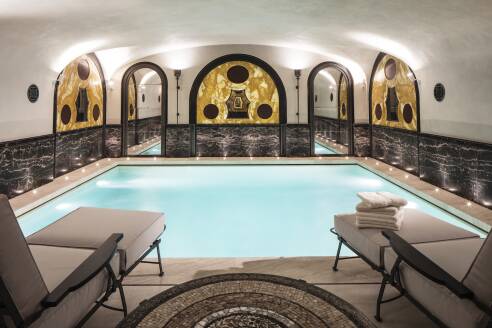- Search magazine...
- Magazine by Category
- Magazine by Region
- article detail
- Search magazine...
- Magazine by Category
- Magazine by Region
- article detail
The Baths of Caracalla represent one of the largest and best-preserved thermal complexes and imperial buildings of the Roman era. It is an extraordinary complex in size and decoration, built in 216 AD by the Roman emperor Caracalla.
Conceived as a building for swimming, sports and body care, it was also a place for long and relaxing walks and studying.
You could enter the central body of the building to access the Calidarium, Tepidarium and Frigidarium in sequence. On the sides, there were two gyms and changing rooms, cisterns and two symmetrical libraries.

The Baths of Caracalla are one of the rare cases in which it is possible to reconstruct, even if in part, the original decorative program.
In these great imperial baths, originally there were huge marble columns, oriental colored marble flooring, glass paste and marble mosaics on the walls, painted stuccos, hundreds of statues and colossal groups, both in the niches of the walls of the rooms and in the most important rooms and gardens.
The basements represented the place where hundreds of slaves and skilled workers were able to operate the spa's ingenious technological machine.
Preserved for about two kilometres, the underground had driveways where the lumber depots were also located.
For the water supply, a special branch of the Acqua Marcia aqueduct, the Aqua Antoniniana, was created. Restored several times, the spa ceased to function in 537 AD.
Discover here the best luxury villas for rent in Italy and start planning your next exclusive stay in the Bel Paese!
Copyright © Home in Italy. All rights reserved.







